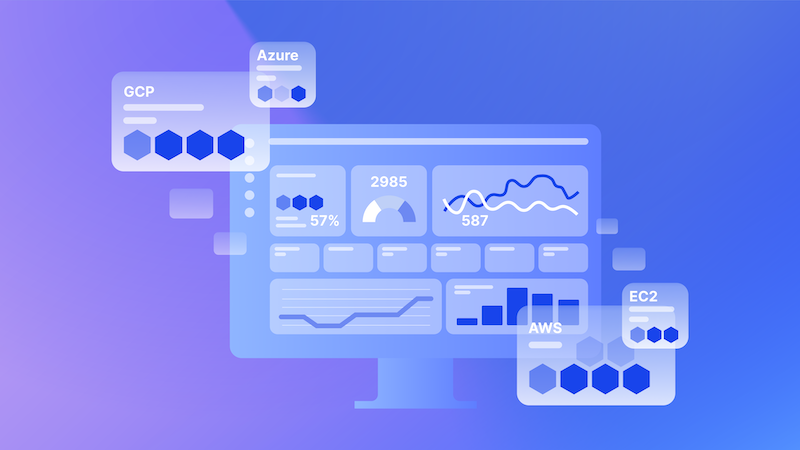Digital uptime is crucial for any business that operates an online store or even a simple website. Whether you’re a small, local business or an international conglomerate, your customers will be quick to spot if your digital presence fails. Ping checks, website synthetics, and uptime are three different ways to measure the performance of a website. But each one has its own benefits and weaknesses. Understanding the difference between them can make all the difference in ensuring your website performs well. Learn the difference between ping checks, synthetics, and uptime as they relate to evaluating the performance of your website.
Contents
- What Are Ping Checks?
- What Are Website Synthetics?
- What Are Website Synthetic Transaction Checks?
- What Are Uptime Checks?
- Ping Checks vs. Synthetics
- Ping Checks vs. Uptime
- Synthetics vs. Uptime
- Which Metrics Are the Most Important for Website Monitoring?
- Importance of Monitoring Website Performance
What Are Ping Checks?
Ping checks are one of the simplest tests to see if a website is up and running. All that is required is a connection to the server hosting the website from any other device that can communicate with it, such as a computer, cell phone, or another server. The ping check sends a request to the server where the website is hosted, and a simple answer is returned. If the answer comes back okay, the website is up and running. If not, that means the website is inaccessible.
Because ping checks are so simple to perform, their strength is in being an easy and fast way to check website availability. What they cannot do is provide any detailed information. A ping check will tell you if the site is up, but not if it is working correctly.
Ping checks can be performed frequently without interfering with your website, which is why some automated systems use them periodically to automatically monitor uptime for your site. While using ping checks is common, there are many conditions where they may not deliver accurate information. For example, intermittent server issues may not cause a ping check to fail, if the server doesn’t fail in the time a ping check is sent. But if it’s failing outside the time that ping checks are being performed, it’s possible that the website is experiencing downtime without anyone knowing.
Ping checks also may not indicate problems with servers receiving information, which can also be detrimental to user experience.
What Are Website Synthetics?
Synthetic checks are a type of website performance metric. Synthetic checks provide a snapshot of how your website performs when it is accessed from the server side. Synthetic checks measure the difference between the user’s request and the response time, which provides valuable insight into how your site is performing and what you might need to change to improve its performance.
Website synthetics use scripts to simulate traffic on your site. This allows for more accurate measurements because they can show you how fast your pages load under various network conditions, such as high-speed broadband, 3G mobile networks, and so on. Website synthetics also provide useful information such as how far down the page people scroll before leaving if they get frustrated with loading time.
Synthetic checks can be used to measure latency (the time between sending a message and receiving a response) and packet loss, but they’re not always available for every server type. Synthetic checks are also useful when testing a large number of pages or websites, a process that relies on automation. By automating this process the system is able to perform longer and more detailed synthetics check with regular frequency.
What Are Website Synthetic Transaction Checks?
Website synthetic transaction checks are another way to measure a website’s performance. Synthetic checks are only used for specific types of websites, such as e-commerce sites. This type of website monitoring repeats a script or form submission and tracks how long it takes for the site to respond. This data is then compared against other measurements to get an idea of how well the website is performing.
What Are Uptime Checks?
Checking uptime is exactly what it sounds like: verifying how long a website has been running without interruption. This is the most reliable way to know if a website’s connection is working properly or not.
Uptime checks are a type of website monitoring that alerts you when the website is down. Typically, this information comes from an ISP or a third-party provider. If you’re checking uptime manually, the tool you use will need access to both the internet, your server, and your hosting provider’s servers.
Ping Checks vs. Synthetics
Ping checks are a common way for businesses to monitor uptime. The time it takes to receive a response is measured in milliseconds. If there is a delay in response, it means there might be something wrong with the server. Uptime checks are performed periodically, usually when a company is trying to monitor uptime.
Because ping checks are fast and easy to perform, they are often the first method used to measure availability. They require no special software or downloads and can immediately tell you if the site is loading quickly, but not what’s causing glitches on your website.
Synthetics are similar to ping checks, but synthetics load every page on the website instead of just one. Synthetic checks can provide more information about how well your site is performing; however, they need specialized software or downloads to use this method. Synthetic checks also take longer than ping checks to complete.
Ping Checks vs. Uptime
Ping checks work well as a periodic test to see if there are any errors or malfunctions. However, ping checks only show you how well your website responds to external requests. They do not provide information on how often people visit your site or where they come from.
Uptime measures how long a website is up and running without interruptions. It also shows how frequently visitors get to see the site without interruption and is calculated by the percentage of time that a site is available during a specific period of time (usually 24 hours). Uptime does not indicate the number of visits or referrers; it simply tells you how often visitors get uninterrupted access to your site.
Synthetics vs. Uptime
Synthetics use scripted connections in order to emulate live traffic from real users accessing your site in real-time. Synthetics are more accurate than ping checks because they make sure that data is moving through all parts of your site just like it would when someone is actually visiting – including both data coming in and data going back out again. Uptime checks, on the other hand, compare how your site is performing from a real visitor’s perspective. It means that if you have a problem with a page on your site, you will see the problem before it becomes too widespread.
Which Metrics Are the Most Important for Website Monitoring?
To understand which metrics are the most important for website monitoring, it’s important to look at your website monitoring goals.
Ping checks, synthetics, and uptime measurements all have both strengths and weaknesses. Ping checks are fast but can be high-maintenance. Synthetics are slower but more precise. Uptime is the measure of how often a website has been up during a given period of time. Choosing the best metric depends on your needs and what you want to achieve with your website.
There is no single metric that will tell you everything you need to know about your website’s performance. Making a decision on what to measure depends on the needs of your site. In practice, your company is likely to use a combination of methods to achieve the desired results.
The most important metric to start with is ensuring that the site is up and running as often as possible. If the website is down, the other metrics won’t matter. People can’t access your site and your website is not being used. At this level, ping tests should be used often to ensure simply that your website is up.
For more insights, most companies will use a method that provides more detailed feedback along with simple pings. Uptime and synthetics are both effective ways of measuring performance but have different requirements. Your company should use at least one of them regularly to take a more detailed look at your website performance.
Importance of Monitoring Website Performance
Monitoring website performance allows you to find out as soon as possible if the site is having any issues and address them quickly. Drastic drops in traffic or sudden changes in rankings can be caused by website issues that need to be dealt with immediately.
Website monitoring also helps you identify and solve problems quickly to prevent widespread performance issues and allow your website to run more consistently and efficiently. In a business environment, monitoring can keep you ahead of competitors who might catch on to your website’s problems sooner than you.
Choosing which monitoring tools you use ensures that you get the right data to make decisions. Some of the most important factors for a website are page loading speed, performance, and uptime. Ping checks, website synthetics, and uptime are three different ways to measure the performance of your website and all three may be crucial to your site’s performance.
Subscribe to our blog
Get articles like this delivered straight to your inbox








